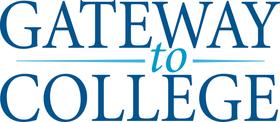Ten community colleges are enjoying the distinction as one of the finalists for the Aspen Prize for Community College Excellence. The schools featured on this elite list have all shown tremendous strides in important aspects of the college experience, such as student retention, employability after college and academic success while in school. Presidents from the schools on the list were also invited to join President Obama in a roundtable discussion regarding innovations at community colleges and how those ideas can be implemented on other campuses as well. The Aspen Prize has helped to elevate high-achieving community colleges to a visible level where other schools can capitalize on the success and innovation of the finalists to bring their own schools up to par.
What is the Aspen Prize?
The Aspen Prize was announced at last year’s community college summit at the White House. The purpose of the prize is to spotlight colleges that have dramatically increased student outcomes, according to a report at the Community College Times. When the ideas and methodology of these outstanding schools are showcased, other schools across the country can implement innovative techniques to improve outcomes on their campuses as well. The 10 finalists were selected from a short list of 120 schools. The winner of the Aspen Prize, as well as three runner-up schools, will be announced in December of this year, when they will all share a portion of the $1 million prize.
“The finalists impressed us with their efforts to help students succeed in college, as well as to ensure that their programs would prepare students to compete successfully in the labor market,” Cecilia Rouse, an Aspen Prize committee member and professor at Princeton University, told the Times.
The Aspen Institute, which will be responsible for announcing and awarding the prize in December, said that the program is not as much about competition between community colleges as it is about raising the bar for community college performance across the country. The ideas behind the program are embraced by the Obama Administration, which is committed to presenting community college as a viable option for training up a competitive workforce in the global economy.
“Practically everyone can see the link between having a college degree and economic stability,” Josh Wyner, executive director of the Aspen program, told the Times. “Recognizing and encouraging community college excellence is critical to helping more Americans get the skills they need, especially in difficult economic times.”
Schools that Made the Cut
The 10 Aspen Prize finalists are:
Lake Area Technical Institute – This school was selected primarily for its ability to help students find employment after graduation. Thanks to a partnership with a number of companies in the South Dakota community where the campus is located, nearly all of the students that graduate from Lake Area Technical Institute find work or pursue additional education.
Miami Dade College – With a diverse student body, Miami Dade has shown that student retention and academic success can be an achievable goal of a community college no matter what the demographics look like. Miami Dade focuses on evaluation and retention strategies geared toward helping students persevere to graduation.
Mississippi Gulf Coast Community College – One of the strategies employed by this school is to focus on the quality of teaching. To this end, Mississippi Gulf Coast Community College has 82 percent of their faculty serving as full-time staff members. The president of the college, Dr. Mary S. Graham, is one of 17 community college leaders invited to the roundtable discussion at the White House this month, according to a report at The Republic.
Mott Community College – This successful community college has seen its numbers steadily grow over the past five years, both in terms of students and degrees awarded. Mott’s system of student success and retention is a precise one that involves identifying specific areas of improvement and targeting solutions that will increase successful outcomes.
Northeast Iowa Community College–Calmar – According to the Decorah Newspapers, this school boasts a graduation rate that is 24 percent higher than the national average. Northeast Iowa also gauges the workforce in the area to ensure the degrees students earn will be useful to them after college.
Santa Barbara City College – This California school uses extensive metrics to determine student performance during school and in the workforce afterward. According to a report at the Los Angeles Times, the acting president of Santa Barbara, Jack Friedlander, will also be participating in the roundtable discussion in Washington this month.
Southwest Texas Junior College – According to the Houston Chronicle, this southern community college may have one of the most diverse student body populations, with nearly 80 percent of Hispanic students making up the bulk of the demographics on this campus and nearly half of all STJC students receiving Pell grants. Nonetheless, this school has increased student success and completion over the past five years.
Valencia College – Valencia was added to the list due to its high transfer and graduation rate, which is 12 percent above the national average. By working together with students and faculty, the school has been able to pinpoint solutions that lead to success.
Walla Walla Community College – This school also has an unusually high graduation and transfer rate, at about 14 percent better than the national average. These numbers are despite the fact that a high number of students entering the school are not prepared for college-level work.
West Kentucky Community and Technical College - The final school on the list, West Kentucky earned its spot by increasing the number of students completing programs by 23 percent over a period of five years.
With the finish line in sight, one of these 10 community colleges will win the $1 million prize that can directly benefit its students on campus. Stay tuned!












